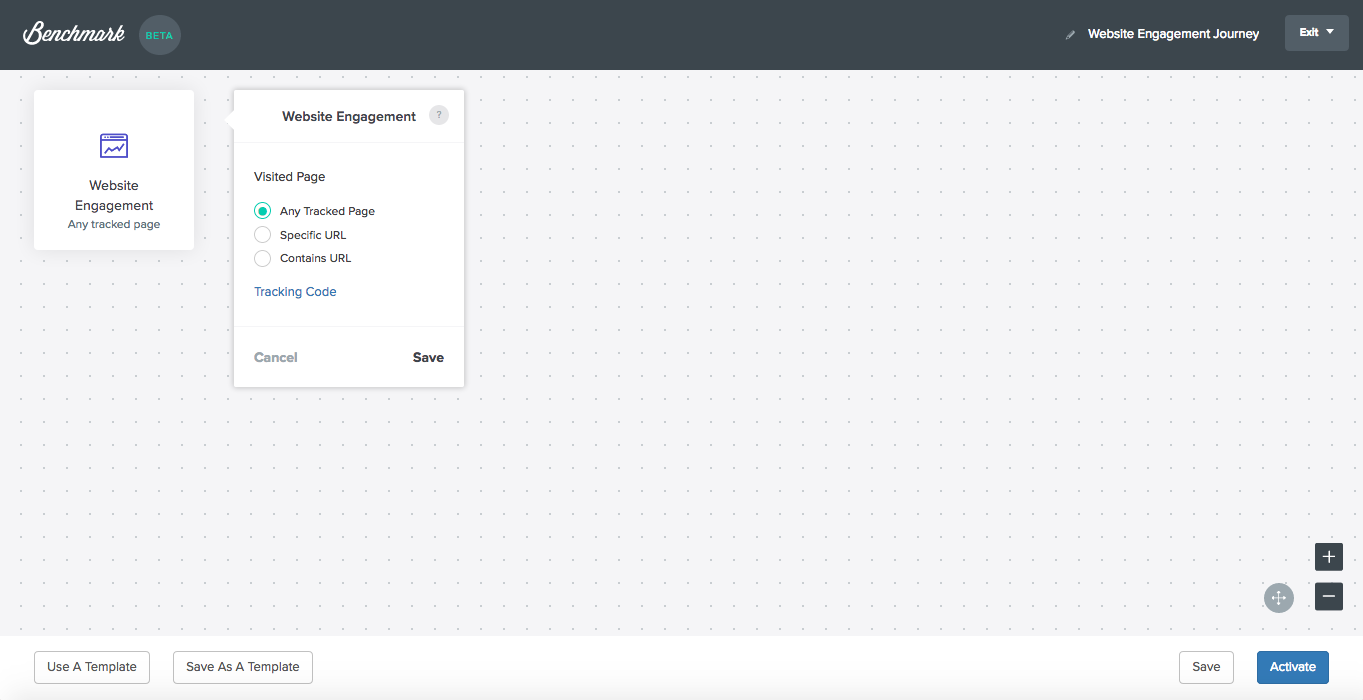Practical Strategies for Automation Pro: Website Engagement
February 23, 2017 3 min read

The goal for every marketer should be an ongoing interaction with their subscribers. It should be customer-focused and based on quality engagement. Many email marketers put their full focus on email and lose sight of where the subscriber goes once they click through to a website or landing page. How a subscriber engages with your website is just as important. As the brilliant Flint McGlaughlin told everyone at last year’s MarketingSherpa Summit:
You can only sell a click in an email.
The actual sale happens on your website. However, it doesn’t always happen with that first visit. Sometimes it takes multiple interactions for a lead to become a customer. Automation Pro allows you to follow up with those website visitors from your email campaigns based on what is of interest to each individual subscriber. After all, according to the eCommerce software firm Monetate, visitors from an email marketing campaign will buy something 4.24% of the time, versus visitors from search engines (2.49%) or social media (0.59%).
Why is using automation such a benefit for this?
- Automated email campaigns perform better than more standard email marketing campaigns to the tune of 70.5% higher open rates and a whopping 152% increase in click-through rates, according to the Epsilon Email Institute.
- According to the DMA, more than 75% of revenue from emails is thanks to triggered campaigns, versus a one-size-fits-all blast to your subscribers
- 74% of marketers say targeted personalization increases customer engagement, according to a report from eConsultancy.
Execute A Website Engagement Journey with Automation Pro
The first thing you’ll need to do is to place the Automation Pro tracking code on all pages of your website.
FAQ: How do I install the tracking code on my website?
The next step is to create a journey in which the first email links to your website and even specific pages for which you can plan targeted follow-ups based on those pages. Say you’re a clothing brand and you’re launching a new line for the upcoming season. If your subscribers click on the items for men’s clothing or women’s clothing, you can have those male and female subscribers segmented to separate lists or simply have follow-ups planned based on which items the subscriber viewed. That could be additional product information, customer reviews, photos with people modeling the items, etc.
Perhaps you’re a SAAS company. If someone goes to your Pricing Page, they’re probably more interested in your product that someone who did not. You can send a more aggressive follow-up trying to convert the warm lead, versus the slow play or branding moves you may want to send to the cooler leads.
In this SAAS example, you can follow-up with additional company information, testimonials and more if they go to your About Us page. Anything you believe the customer would find helpful in learning more about your company and add trust that you would be the best fit for them.
Regardless of the business you’re in, having website engagement to help target to your subscribers is a big sales advantage. Not just for first-time sales, but repeat business as well. According to eMarketer, sending targeted emails based on previous shopping habits made online shoppers more likely to purchase again 81% of the time.
Creating a digital funnel that allows you to send unique follow-ups based on where each subscriber is in the sales process, as well as their interests, makes the subscriber feel that your brand understands their wants and needs. It also puts the odds in your favor in converting leads to sales and customers until loyal brand advocates.


![[外貿干貨] 想讓客戶回信?先別談產品,用這50句「看見他」的話打開局面](https://www.benchmarkemail.com/tw/wp-content/uploads/sites/8/2025/06/1.15配图2.webp)
